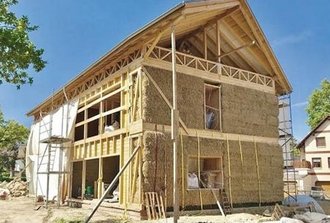Title: "Investigating the Load-Bearing Behavior of Wooden Pegs as Composite Elements in Load-Bearing and Bracing Straw Bale Walls"
Within the scope of the initial investigations in the "Innostroh" project concerning the load-bearing behavior of wooden pegs in straw bale-to-straw bale connections, the question arises regarding the shear strength behavior of the pegs. This study aims to conduct shear tests and provide initial insights into the behavior of the pegs.
Target Audience: Students enrolled in the Bachelor's Degree Program in Civil Engineering
For inquiries, please contact Caridad Moscoso (caridad.moscoso@uni-weimar.de).































